Neoadjuvant treatment for stage III and IV cutaneous melanoma
- PMID: 36648215
- PMCID: PMC9844053
- DOI: 10.1002/14651858.CD012974.pub2
Neoadjuvant treatment for stage III and IV cutaneous melanoma
Abstract
Background: Cutaneous melanoma is amongst the most aggressive of all skin cancers. Neoadjuvant treatment is a form of induction therapy, given to shrink a cancerous tumour prior to the main treatment (usually surgery). The purpose is to improve survival and surgical outcomes. This review systematically appraises the literature investigating the use of neoadjuvant treatment for stage III and IV cutaneous melanoma.
Objectives: To assess the effects of neoadjuvant treatment in adults with stage III or stage IV melanoma according to the seventh edition American Joint Committee on Cancer (AJCC) staging system.
Search methods: We searched the following databases up to 10 August 2021 inclusive: Cochrane Skin Specialised Register, CENTRAL, MEDLINE, Embase, LILACS and four trials registers, together with reference checking and contact with study authors to identify additional studies. We also handsearched proceedings from specific conferences from 2016 to 2020 inclusive.
Selection criteria: Randomised controlled trials (RCTs) of people with stage III and IV melanoma, comparing neoadjuvant treatment strategies (using targeted treatments, immunotherapies, radiotherapy, topical treatments or chemotherapy) with any of these agents or current standard of care (SOC), were eligible for inclusion.
Data collection and analysis: We used standard Cochrane methods. Primary outcomes were overall survival (OS) and adverse effects (AEs). Secondary outcomes included time to recurrence (TTR), quality of life (QOL), and overall response rate (ORR). We used GRADE to evaluate the certainty of the evidence.
Main results: We included eight RCTs involving 402 participants. Studies enrolled adults, mostly with stage III melanoma, investigated immunotherapies, chemotherapy, or targeted treatments, and compared these with surgical excision with or without adjuvant treatment. Duration of follow-up and therapeutic regimens varied, which, combined with heterogeneity in the population and definitions of the endpoints, precluded meta-analysis of all identified studies. We performed a meta-analysis including three studies. We are very uncertain if neoadjuvant treatment increases OS when compared to no neoadjuvant treatment (hazard ratio (HR) 0.43, 95% confidence interval (CI) 0.15 to 1.21; 2 studies, 171 participants; very low-certainty evidence). Neoadjuvant treatment may increase the rate of AEs, but the evidence is very uncertain (26% versus 16%, risk ratio (RR) 1.58, 95% CI 0.97 to 2.55; 2 studies, 162 participants; very low-certainty evidence). We are very uncertain if neoadjuvant treatment increases TTR (HR 0.51, 95% CI 0.22 to 1.17; 2 studies, 171 participants; very low-certainty evidence). Studies did not report ORR as a comparative outcome or measure QOL data. We are very uncertain whether neoadjuvant targeted treatment with dabrafenib and trametinib increases OS (HR 0.28, 95% CI 0.03 to 2.25; 1 study, 21 participants; very low-certainty evidence) or TTR (HR 0.02, 95% CI 0.00 to 0.22; 1 study, 21 participants; very low-certainty evidence) when compared to surgery. The study did not report comparative rates of AEs and overall response, and did not measure QOL. We are very uncertain if neoadjuvant immunotherapy with talimogene laherparepvec increases OS when compared to no neoadjuvant treatment (HR 0.49, 95% CI 0.15 to 1.64; 1 study, 150 participants, very low-certainty evidence). It may have a higher rate of AEs, but the evidence is very uncertain (16.5% versus 5.8%, RR 2.84, 95% CI 0.96 to 8.37; 1 study, 142 participants; very low-certainty evidence). We are very uncertain if it increases TTR (HR 0.75, 95% CI 0.31 to 1.79; 1 study, 150 participants; very low-certainty evidence). The study did not report comparative ORRs or measure QOL. OS was not reported for neoadjuvant immunotherapy (combined ipilimumab and nivolumab) when compared to the combination of ipilimumab and nivolumab as adjuvant treatment. There may be little or no difference in the rate of AEs between these treatments (9%, RR 1.0, 95% CI 0.75 to 1.34; 1 study, 20 participants; low-certainty evidence). The study did not report comparative ORRs or measure TTR and QOL. Neoadjuvant immunotherapy (combined ipilimumab and nivolumab) likely results in little to no difference in OS when compared to neoadjuvant nivolumab monotherapy (P = 0.18; 1 study, 23 participants; moderate-certainty evidence). It may increase the rate of AEs, but the certainty of this evidence is very low (72.8% versus 8.3%, RR 8.73, 95% CI 1.29 to 59; 1 study, 23 participants); this trial was halted early due to observation of disease progression preventing surgical resection in the monotherapy arm and the high rate of treatment-related AEs in the combination arm. Neoadjuvant combination treatment may lead to higher ORR, but the evidence is very uncertain (72.8% versus 25%, RR 2.91, 95% CI 1.02 to 8.27; 1 study, 23 participants; very low-certainty evidence). It likely results in little to no difference in TTR (P = 0.19; 1 study, 23 participants; low-certainty evidence). The study did not measure QOL. OS was not reported for neoadjuvant immunotherapy (combined ipilimumab and nivolumab) when compared to neoadjuvant sequential immunotherapy (ipilimumab then nivolumab). Only Grade 3 to 4 immune-related AEs were reported; fewer were reported with combination treatment, and the sequential treatment arm closed early due to a high incidence of severe AEs. The neoadjuvant combination likely results in a higher ORR compared to sequential neoadjuvant treatment (60.1% versus 42.3%, RR 1.42, 95% CI 0.87 to 2.32; 1 study, 86 participants; low-certainty evidence). The study did not measure TTR and QOL. No data were reported on OS, AEs, TTR, or QOL for the comparison of neoadjuvant interferon (HDI) plus chemotherapy versus neoadjuvant chemotherapy. Neoadjuvant HDI plus chemotherapy may have little to no effect on ORR, but the evidence is very uncertain (33% versus 22%, RR 1.75, 95% CI 0.62 to 4.95; 1 study, 36 participants; very low-certainty evidence).
Authors' conclusions: We are uncertain if neoadjuvant treatment increases OS or TTR compared with no neoadjuvant treatment, and it may be associated with a slightly higher rate of AEs. There is insufficient evidence to support the use of neoadjuvant treatment in clinical practice. Priorities for research include the development of a core outcome set for neoadjuvant trials that are adequately powered, with validation of pathological and radiological responses as intermediate endpoints, to investigate the relative benefits of neoadjuvant treatment compared with adjuvant treatment with immunotherapies or targeted therapies.
Trial registration: ClinicalTrials.gov NCT02231775 NCT02519322 NCT02437279 NCT02211131 NCT00525031 NCT02977052 NCT01608594 NCT01720407 NCT02036086 NCT02303951 NCT02736123 NCT03313206 NCT03618641 NCT04013854 NCT04495010 NCT02858921 NCT02938299 NCT03567889 NCT03698019 NCT04133948 NCT04139902.
Copyright © 2023 The Cochrane Collaboration. Published by John Wiley & Sons, Ltd.
Conflict of interest statement
Claire Gorry: none known. Laura McCullagh: none known. Helen O'Donnell: none known. Sarah Barrett: none known. Susanne Schmitz: no relevant interests; statistical editor for Cochrane Anaesthesia and Cochrane Emergency and Critical Care. Michael Barry: none known. Kay Curtin: consultant for Cancer Trials Ireland (Patient Consultant to Melanoma Committee). Eamon Beausang: no relevant interest; Plastic Surgeon, St James's Hospital, Dublin. Rupert Barry: Founder of DermView Ltd, a dermatology clinic chain; Dermatologist, St James Hospital, Dublin. Imelda Coyne: none known.
Figures

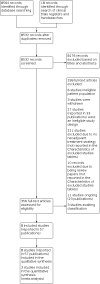
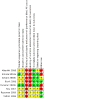
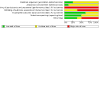
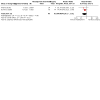
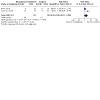
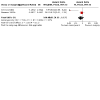
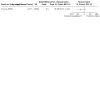
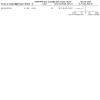
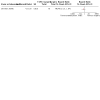

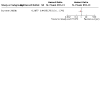
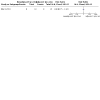

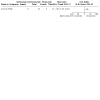
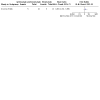
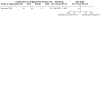
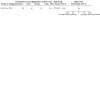

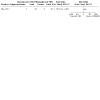

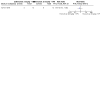
Update of
References
References to studies included in this review
Albertini 2018 {published data only (unpublished sought but not used)}
-
- Albertini MR, Yang RK, Ranheim EA, Hank JA, Zuleger CL, Weber S, et al. Pilot trial of the hu14.18-IL2 immunocytokine in patients with completely resectable recurrent stage III or stage IV melanoma. Cancer Immunology Immunotherapy 2018;67(10):1647-58. [DOI: 10.1007/s00262-018-2223-z] - DOI - PMC - PubMed
-
- NCT00590824. Pilot hu14.18-IL2 in resectable recurrent stage III or stage IV melanoma. clinicaltrials.gov/ct2/show/NCT00590824 (first received 11 January 2008). [Accessed 25 May 2021 https://clinicaltrials.gov/ct2/show/NCT00590824]
-
- Yang R, Albertini M, Hank J, Loibner H, Gillies S, Sondel P, et al. Tumor infiltrating lymphocyte (TIL) percentage as a prognostic biomarker for overall and relapse free survival in Hu14.18-IL2 treated resectable recurrent stage 3 or 4 melanoma patients. Journal for ImmunoTherapy of Cancer 2017;5(Suppl 2):86. [DOI: 10.1186/s40425-017-0289-3] - DOI
Amaria 2018a {published and unpublished data}
-
- Amaria RN, Prieto P, Tetzlaff M, Diab A, Patel S, Woodman SE, et al. Treatment with neoadjuvant + adjuvant dabrafenib and trametinib (D+T) is associated with improved relapse free survival (RFS) versus standard of care (SOC) therapy in patients with high-risk resectable BRAF mutant melanoma. Pigment Cell and Melanoma Research 2017;30(1):78.
-
- Amaria RN, Prieto PA, Tetzlaff MT, Reuben A, Andrews MC, Wargo JA, et al. Neoadjuvant plus adjuvant dabrafenib and trametinib versus standard of care in patients with high-risk, surgically resectable melanoma: a single-centre, open-label, randomised, phase 2 trial. Lancet Oncology 2018;19(2):181-93. - PubMed
-
- NCT02231775. Dabrafenib and trametinib before and after surgery in treating patients with stage IIIB-C melanoma with BRAF V600 mutation [Neoadjuvant and adjuvant dabrafenib and trametinib in patients with clinical stage III melanoma (Combi-Neo)]. clinicaltrials.gov/ct2/show/NCT02231775 (first received 4 September 2014).
-
- Prieto PA, Amaria R, Reuben A, Gopalakrishnan V, Spencer C, Jiang H, et al. Novel neoadjuvant targeted therapy trial with dabrafenib + trametinib yields high response rates and improved relapse-free survival over standard of care (SOC) therapy in patients with high-risk resectable BRAF-mutant melanoma. Annals of Surgical Oncology 2017;24(Suppl 1):S7.
-
- Wargo JA, Amaria RN, Prieto PA, Andrews MC, Tetzlaff MT, Futreal PA, et al. Relapse-free survival and target identification to enhance response with neoadjuvant and adjuvant dabrafenib + trametinib (D+T) treatment compared to standard-of-care (SOC) surgery in patients (pts) with high-risk resectable BRAF-mutant metastatic melanoma. Journal of Clinical Oncology 2017;35(15_suppl):9587-9587.
Amaria 2018b {published and unpublished data}
-
- Amaria RN, Reddy SM, Tawbi HA-H, Davies MA, Ross MI, Glitza IC, et al. Neoadjuvant (neo) immune checkpoint blockade (ICB) in patients (Pts) with high-risk resectable metastatic melanoma (MM). Journal of Clinical Oncology 2018;36(15_suppl):9510-9510.
-
- NCT02519322. Neoadjuvant and adjuvant checkpoint blockade [Neoadjuvant and adjuvant checkpoint blockade in patients with clinical stage III or oligometastatic stage IV melanoma]. clinicaltrials.gov/ct2/show/nct02519322 (first received 10 August 2015).
-
- Reddy SM, Amaria RN, Spencer CN, Tetzlaff M, Reuben A, Andrews M, et al. Neoadjuvant nivolumab versus combination ipilimumab and nivolumab followed by adjuvant nivolumab in patients with resectable stage III and oligometastatic stage IV melanoma: Preliminary findings. Journal for ImmunoTherapy of Cancer 2017;5(Suppl 2):86.
Blank 2018 {published and unpublished data}
-
- Blank C, Van Akkooi A, Rozeman EA, Kvistborg P, Van Thienen HV, Stegenga B, et al. (Neo-)adjuvant ipilimumab + nivolumab (IPI + NIVO) in palpable stage 3 melanoma-initial data from the OpACIN trial. Annals of Oncology 2016;27(Suppl 6):Abstract 4587.
-
- Blank CU, Rozeman EA, Fanchi LF, Sikirska K, de Wiel B, Schumacher TN, et al. Neoadjuvant versus adjuvant ipilimumab plus nivolumab in macroscopic stage III melanoma. Nature Medicine 2018;24:1655-61. [NCT02437279] - PubMed
-
- Blank CU, Van Akkooi A, Rozeman L, Kvistborg P, Van Thienen JV, Stegenga B, et al. (Neo-)adjuvant ipilimumab + nivolumab (IPI + NIVO) in palpable stage 3 melanoma-the OpACIN trial. Pigment Cell and Melanoma Research 2017;30(1):85.
-
- Blank CU, Versluis JM, Reijers IL, Sikorska K, Houdt WJ, Thienen JV, et al. 3-year relapse-free survival (RFS), overall survival (OS) and long-term toxicity of (neo)adjuvant ipilimumab (IPI) + nivolumab (NIVO) in macroscopic stage III melanoma (OpACIN trial). Annals of Oncology 2019;30(Suppl 5):v535.
-
- Boekhout AH, Jozwiak K, Rozeman EA, Janssen SH, Van de Poll-Franse LV, Blank CU. Patient-reported outcomes of patients treated with (neo)adjuvant immune checkpoint combination therapy in high-risk stage III macroscopic melanoma: A matched cohort study. Journal of Clinical Oncology 2019;37(15 Suppl):9588.
Dummer 2020b {published data only (unpublished sought but not used)}
-
- Andtbacka RH, Chastain M, Li A, Shilkrut M, Ross MI. Phase 2, multicenter, randomized, open-label trial assessing efficacy and safety of talimogene laherparepvec (T-VEC) neoadjuvant treatment (tx) plus surgery vs surgery for resectable stage IIIB/C and IVM1a melanoma (MEL). Journal of Clinical Oncology 2015;33(15_suppl):TPS9094.
-
- Andtbacka RH, Shabooti M, Li A, Chastain M, Shilkrut M. A phase 2, randomized, open-label trial assessing efficacy and safety of talimogene laherparepvec (T-VEC) neoadjuvant treatment (TX) plus surgery vs. surgery for resectable stage IIIB-IVM1a melanoma. Cancer Research: American Association for Cancer Research 2015;75(14 Suppl):Abstract B13.
-
- Dummer R, Gyorki D, Hyngstrom J, Berger A, Conry R, Demidov L, et al. 3-year results of the phase 2 randomized trial for talimogene laherparepvec (T-VEC) neoadjuvant treatment plus surgery vs surgery in patients with resectable stage IIIB-IVM1a melanoma. Journal for Immunotherapy of Cancer 2020;8(Suppl 3):A263.
-
- Dummer R, Gyorki D, Hyngstrom J, Berger A, Conry R, Dermidov L, et al. A randomized phase 2 study of neoadjuvant talimogene laherparepvec (T-VEC) plus surgery vs surgery for resectable stage IIIB-IVM1a melanoma: 2-year primary analysis of recurrence-free survival (RFS). Journal for Immunotherapy of Cancer 2019;7(Suppl 1):P455.
-
- Dummer R, Gyorki DE, Hyngstrom J, Berger A, Conry R, Demidov L, et al. Improved recurrence-free survival (RFS) from a randomized phase 2 study of neoadjuvant (neo) talimogene laherparepvec (T-VEC) plus surgery (surg) vs surg for resectable stage IIIB-IVM1a melanoma (MEL). Pigment Cell and Melanoma Research 2020;33(1):188.
Hwu 2017 {published data only (unpublished sought but not used)}
-
- Chakravarti N, Ivan D, Ross MI, Ilagan JL, Warneke CL, Kim K, et al. Biomarker study in patients with resectable AJCC stage IIIc or Stage IV (M1a) melanoma treated in a randomised phase II neoadjuvant trial. Journal of Clinical Oncology 2013;31(Suppl):Abstract 9047.
-
- NCT00525031. Temozolomide alone or with pegylated interferon-alpha 2b (PGI) in melanoma patients [Randomized phase II neoadjuvant study of temozolomide alone or with pegylated interferon-alpha 2b in patients with resectable American Joint Committee on Cancer (AJCC) stage IIIB/IIIC or stage IV (M1a) metastatic melanoma]. clinicaltrials.gov/ct2/show/nct00525031 (first received 5 September 2007).
Rozeman 2019 {published and unpublished data}
-
- 2016-001984-35. Multicenter phase 2 study to identify of the optimal neo-adjuvant combination scheme of ipilimumab and nivolumab (OpACIN-neo). clinicaltrialsregister.eu/ctr-search/search?query=eudract_number:2016-00... (first received April 2017).
-
- Blank CU, Rozeman EA, Menzies AM, Van de Wiel BA, Adhkari C, Sikorska K, et al. OpACIN-neo: A multicenter phase II study to identify the optimal neo-adjuvant combination scheme of ipilimumab (IPI) and nivolumab (NIVO). Annals of Oncology 2018;29(Suppl 8):viii734.
-
- Blank CU, Versluis JM, Rozeman EA, Menzies AM, Reijers IL, Krigsman O, et al. 36-months and 18-months relapse-free survival after (neo)adjuvant ipilimumab plus nivolumab in macroscopic stage III melanoma patients -update of the OpACIN and OpACIN-neo trials. Cancer Research 2020;80(16):Abstract 3412.
-
- NCT02977052. Optimal neo-adjuvant combination scheme of ipilimumab and nivolumab [Multicenter phase 2 study to identify of the optimal neo-adjuvant combination scheme of ipilimumab and nivolumab (OpACIN-neo)]. clinicaltrials.gov/ct2/show/NCT02977052 (first received 30 November 2016).
-
- NCT02977052. Optimal neo-adjuvant combination scheme of ipilimumab and nivolumab OpACIN-neo. ictrptest.azurewebsites.net/Trial2.aspx?TrialID=NCT02977052 (first received 2 November 2016).
Tarhini 2018 {published data only (unpublished sought but not used)}
-
- Khunger A, Sarikonda G, Tsau J, Alfonso Z, Gao J, Pahuja A, et al. Predictive value of circulating B cells and T cell subsets in melanoma patients treated with neoadjuvant ipilimumab and interferon. Journal of Clinical Oncology 2020;38(15 Suppl):e15036.
-
- NCT01608594. Neoadjuvant combination therapy with ipilimumab and highdose IFN-α2b for melanoma. clinicaltrials.gov/ct2/show/NCT01608594 (first received 31 May 2012).
-
- Tarhini A, Rahman Z, Lin Y, Vallabhaneni P, Tawbi H, Gnan A, et al. Neoadjuvant combination immunotherapy with ipilimumab (3mg/kg or 10mg/kg) and high dose IFN-a2b in locally/regionally advanced melanoma. Journal of Clinical Oncology 2016;34(15 Suppl):9585.
-
- Vallabhaneni P, Achkar T, Vignali M, Benzeno S, Rytleski J, Tarhini AA. Clonality of T cell repertoire in the tumor (TME) and peripheral blood of regionally advanced melanoma patients (pts) treated with neoadjuvant ipilimumab (ipi) and high dose interferon-alpha (HDI). Journal of Clinical Oncology 2017;35(15 Suppl):9585.
References to studies excluded from this review
2006‐005350‐79 {published data only}
-
- 2006-005350-79. A single arm, single-centre, open-label, exploratory trial of recombinant Interleukin-21 administered subcutaneously for 4 weeks as neo-adjuvant treatment prior to sentinel lymph node/complete lymph node dissection followed by 8 weeks of adjuvant treatment in subject with stage III malignant melanoma. www.clinicaltrialsregister.eu/ctr-search/search?query=2006-005350-79 (first received 22 July 2008).
Ahmann 1976 {published data only}
-
- Ahmann DL, Bisel HF, Edmonson JH, Hahn RG, O'Connell MJ, Frytak S. Phase II study of VP-16-213 versus dianhydrogalactitol in patients with metastatic malignant melanoma. Cancer Treatment Reports 1976;60(11):1681-2. - PubMed
Ariyan 1982 {published data only}
-
- Ariyan S, Kirkwood J, Mitchell M, Nordlund J, Lerner A, Papac R. Intralymphatic and regional surgical adjuvant immunotherapy in high-risk melanoma of the extremities. Surgery 1982;92(3):459-63. - PubMed
Buzaid 1998 {published data only}
-
- Buzaid AC, Colome M, Bedikian A, Eton O, Legha SS, Papadopoulos N, et al. Phase II study of neoadjuvant concurrent biochemotherapy in melanomao patients with local-regional metastases. Melanoma Research 1998;8(6):549-56. - PubMed
DeCOG 2010 {published data only}
-
- 2010-022103-21/DE. Neoadjuvant treatment of locoregional metastases in malignant melanoma (AJCC stage IIIB/C) with Multiferon: A phase IIa DeCOG trial. www.clinicaltrialsregister.eu/ctr-search/trial/2010-022103-21/DE (first received 19 November 2010).
Dillman 2015 {published data only}
-
- Dillman RO, Bayer ME, Langford JA, Hseih CY, Wyatt TJ, Liang G, et al. Phase III multicenter trial of eltrapuldencel-T: Autologous dendritic cells loaded with irradiated autologous tumour cells (DC-TC) in granulocyte-macrophage colony stimulating factor (GM-CSF) in patients with metastatic melanoma (INTUS trial). Journal of Clinical Oncology 2015;33(15 Suppl 1):TPS9082.
Koyanagi 2005 {published data only}
Long 2019 {published data only}
-
- Long GV, Saw RP, Lo S, Nieweg OE, Shannon KF, Gonzalez M, et al. Neoadjuvant dabrafenib combined with trametinib for resectable, stage IIIB-C, BRAF V600 mutation-positive melanoma (NeoCombi): a single-arm, open-label, single-centre, phase 2 trial. Lancet Oncology 2019;20(7):961-71. - PubMed
Madu 2016 {published data only}
-
- Blankenstein SA, Rohaan MW, Klop WM, Van Der Hiel B, Van De Wiel BA, Haanen JB, et al. Neoadjuvant cytoreductive treatment with BRAF/MEK inhibition of prior unresectable regionally advanced melanoma to allow complete surgical resection: REDUCTOR trial. Journal of Clinical Oncology 2019;37(15 Suppl):9587-87. - PubMed
-
- Madu MF, Rozeman EA, Hage JA, Wouters M, Klop W, Thienen JV, et al. Neoadjuvant cytoreductive treatment of regionally advanced melanoma with braf/mek inhibition: study protocol of the REDUCTOR (cytoreductive treatment of dabrafenib combined with trametinib to allow complete surgical resection in patients with braf mutated, prior unresectable stage iii or iv melanoma) trial. Clinical Skin Cancer 2016;1(1):48-52.
-
- NTR4654. Trial with melanoma patients who are treated with dabrafenib and trametinib to make the tumor smaller, so it can be surgically removed [Cytoreductive treatment of dabrafenib combined with trametinib to allow complete surgical resection in patients with BRAF mutated, prior unresectable stage III or IV melanoma]. ictrptest.azurewebsites.net/Trial2.aspx?TrialID=NTR4654 (first received 20 June 2014).
Moschos 2006 {published data only}
-
- Moschos SJ, Edington HD, Land SR, Rao UN, Jukic D, Shipe-Spotloe J, et al. Neoadjuvant treatment of regional stage IIIB melanoma with high-dose interferon alfa-2b induces objective tumour regression in association with modulation of tumour infiltrating host cellular immune responses. Journal of Clinical Oncology 2006;24(19):3164-71. - PubMed
Mudigonda 2016 {published data only}
-
- Mudigonda TV, Wyman K, Spigel DR, Dahlman KB, Greco FA, Puzanov I, et al. A phase II trial of erlotinib and bevacizumab for patients with metastatic melanoma. Pigment Cell and Melanoma Research 2016;29(1):101-3. - PubMed
Najjar 2017 {published data only}
Najjar 2018 {published data only}
-
- Najjar Y, Lin H, Lin Y, McCurry D, Davar D, Drabick J, et al. A phase 1 study of neoadjuvant combination immunotherapy with pembrolizumab (P) and high dose IFN-α2b(HDI) in locally/regionally advanced melanoma. Pigment Cell and Melanoma Research 2019;32(1):92-172.
NCT01720407 {published data only}
-
- NCT01720407. Relevance of imiquimod as neo-adjuvant treatment to reduce excision size and the risk of intralesional excision in lentigo malignant of the face (ImiReduc). clinicaltrials.gov/ct2/show/NCT01720407 (first received 2 November 2012).
NCT02036086 {published data only}
-
- NCT02036086. Study of neo-adjuvant use of vemurafenib plus cobimetinib for BRAF mutant melanoma with palpable lymph node metastases. clinicaltrials.gov/ct2/show/NCT02036086 (first received 14 January 2014).
NCT02303951 {published data only}
-
- NCT02303951. Neoadjuvant vemurafenib + cobimetinib in melanoma: NEO-VC. clinicaltrials.gov/ct2/show/NCT02303951 (first received 1 December 2014).
NCT02736123 {published data only}
-
- NCT02736123. Neoadjuvant combination biotherapy with ipilimumab and nivolumab or nivolumab alone [Neoadjuvant combination biotherapy with ipilimumab and nivolumab or nivolumab alone in patients with locally/regionally advanced/recurrent melanoma: a randomized efficacy, safety and biomarker study]. clinicaltrials.gov/ct2/show/NCT02736123 (first received 13 April 2016).
NCT03313206 {published data only}
-
- NCT03313206. Neoadjuvant treatment associated with maintenance therapy by anti-pd1 immunotherapy in patients with resectable head and neck mucosal melanoma (IMMUQ). clinicaltrials.gov/ct2/show/NCT03313206 (first received 18 October 2017).
NCT03618641 {published data only}
-
- Davar, D, Karunamurthy, A, Hartman, D, DeBlasio, R, Chauvin, J M, Ding, Q et al. Phase ii trial of neoadjuvant nivolumab (NIVO) and intra-tumoral (IT) CMP-001 in high-risk resectable melanoma (neo-c-nivo): Final results. Journal for Immunotherapy of Cancer 2020;8(Suppl 3):A185-186.
-
- Davar D, Karunamurthy A, Hartman D, Ka M, Menna C, Burkette J, et al. O34 Phase II trial of neoadjuvant nivolumab (Nivo) and intra-tumoral (IT) CMP-001 in high risk resectable melanoma (MEL): Preliminary results. Journal for ImmunoTherapy of Cancer 2019;7(Suppl 1):283.
-
- NCT03618641. CMP-001 in combo with nivolumab in stage IIIB/C/D melanoma patients with clinically apparent lymph node disease [Neoadjuvant Phase II study of TLR9 agonist CMP-001 in combination with nivolumab in stage IIIB/C/D melanoma patients with clinically apparent lymph node disease]. clinicaltrials.gov/ct2/show/NCT03618641 (first received 7 August 2021).
NCT04007588 {published data only}
-
- NCT04007588. A phase II trial of neoadjuvant treatment with PD-1 inhibition (Nivolumab) with or without IDO inhibition (BMS-986205) and with or without CTLA-4 inhibition (Ipilimumab) in resectable stage III or IV melanoma. clinicaltrials.gov/ct2/show/NCT04007588 (first received 5 July 2019).
NCT04013854 {published data only}
-
- NCT04013854. Adjuvant treatment determined by pathological response to neoadjvuant nivolumab [Adjuvant nivolumab or ipilimumab + nivolumab determined by pathological response to a single dose of neoadjvuant nivolumab]. clinicaltrials.gov/ct2/show/NCT04013854?term=NCT04013854&draw=2&... (first received 10 July 2019).
NCT04495010 {published data only}
-
- NCT04495010. Neoadjuvant nivolumab+ipilimumab followed by adjuvant nivolumab or neoadjuvant nivolumab+ipilimumab followed by adjuvant observation compared with adjuvant nivolumab in treatment-naive high-risk melanoma participants (CheckMate 7UA) [A phase 2, randomized study of neoadjuvant nivolumab plus ipilimumab followed by adjuvant nivolumab or neoadjuvant nivolumab plus ipilimumab followed by either adjuvant nivolumab or postsurgical observation depending on pathologic response compared with adjuvant nivolumab in treatment-naive patients with resectable clinically detectable stage iii melanoma]. clinicaltrials.gov/ct2/show/NCT04495010 (first received 31 July 2020).
NCT04741997 {published data only}
-
- NCT04741997. Adjuvant therapy based on pathologic response after neoadjuvant encorafenib binimetinib in melanoma [A randomized pilot trial of adjuvant therapy based on pathologic response after neoadjuvant encorafenib and binimetinib in advanced melanoma]. clinicaltrials.gov/ct2/show/NCT04741997 (first received 5 February 2021).
Notohardjo 2020 {published data only}
-
- Notohardjo, JCL, Bekkenk, MW, Van Den Tol, MP, Van Den Eertwegh, AJM, De Gruijl, TD. Local immunotherapy in early stage melanoma - Protocol synopsis for a randomized phase 2 trial. [Dutch] [Lokale immuuntherapie bij melanoom in een vroeg stadium – protocol synopsis voor een gerandomiseerde fase 2-studie]. Nederlands Tijdschrift voor Dermatologie en Venereologie 2020;30(6):16-8.
O'Connor 1978 {published data only}
-
- O'Connor TP, Labandter HP, Hiles RW, Bodenham DC. A clinical trial of BCG immunotherapy as an adjunct to surgery in the treatment of primary malignant melanoma. British Journal of Plastic Surgery 1978;31(4):317-22. - PubMed
Passalacqua 1996 {published data only}
-
- Passalacqua R, Cocconi G, Dodero A, Bella M, Sarra S, Tonato M, et al. Long-term results of neoadjuvant chemotherapy in patients with local-regional recurrence of melanoma. Melanoma Research 1997;7 Suppl 1:S119.
-
- Passalacqua R, Cocconi G, Dodero A, Bella M, Sarra S, Tonato M, et al. Neoadjuvant chemotherapy in patients with local-regional recurrence of melanoma. Tumori 1996;82(Suppl):108.
Prieto 2016 {published data only}
-
- Prieto PA, Cooper Z, Gopalakrishnan V, Tetzlaff MT, Bassett T, Amaria RN, et al. Treatment with neoadjuvant targeted therapy yields high response rates and pathologic complete responses in patients with resectable metastatic melanoma. Annals of Surgical Oncology 2016;20(Suppl 1):S130-1.
Reijers 2019 {published data only}
-
- Reijers I, Rozeman EA, Menzies AM, Van De Wiel BA, Eriksson H, Suijkerbuijk K, et al. Personalized response-driven adjuvant therapy after combination ipilimumab and nivolumab in high-risk resectable stage III melanoma: PRADO trial. Journal of Clinical Oncology 2019;37(15 Suppl):TPS9605.
-
- Van Den Heuvel NM, Reijers IL, Versluis JM, Rozeman EA, Jozwiak K, Blommers KH, et al. Health-related quality of life in stage III melanoma patients treated with neoadjuvant ipilimumab and nivolumab followed by index lymph node excision only versus therapeutic lymph node dissection: 24-week results of the PRADO trial. Annals of Oncology 2020;31(Suppl 4):S737.
Samoylenko 2019 {published data only}
-
- Samoylenko I, Korotkova OV, Shakhray E, Zabotina T, Berdnikov S, Tabakov D, et al. Recurrence-free survival (RFS) and objective response rate (ORR) phase 1/2 study of intralesional (IL) neoadjuvant (neo) anti-PD1 agents (aPD1) for stage IIIB-IV melanoma (MEL). Journal of Clinical Oncology 2019;37(15 Suppl):e14171.
Schermers 2019 {published data only}
Shah 2010 {published data only}
-
- Shah GD, Socci ND, Gold JS, Wolchok JD, Carvajal RD, Panageas KS, et al. Phase II trial of neoadjuvant temozolomide in resectable melanoma patients. Annals of Oncology 2010;21(8):1718-22. - PubMed
Stiles 2017 {published data only}
-
- Stiles ZE, Fleming MD, Luce EA, Deneve JL. Neoadjuvant talimogene laherparepvec for the treatment of metastatic melanoma. American Surgeon 2017;83(7):E266-8. - PubMed
Urosevic 1996 {published data only}
-
- Urosevic V, Chollet P, Adenis A, Chauvergne J, Fargeot P, Roche H, et al. Results of a phase II trial with cystemustine in advanced malignant melanoma. A trial of the EORTC Clinical Screening Group. European Journal of Cancer 1996;32A(1):181-2. - PubMed
Van den Hout 2010 {published data only}
-
- Van Den Hout MF, Sluijter BJ, Santegoets SJ, Van Den Eertwegh AJ, Meijer S, Van Den Tol P, et al. Arming the melanoma sentinel lymph node against tumor spread: The effects of local administration of combined low-dose CpG-B PF-3512676 and GM-CSF. Cancer Research 2010;70(8 Suppl):5618.
Van Den Hout 2013 {published data only (unpublished sought but not used)}
-
- Van Den Hout MF, Koster BD, Scheper RJ, Van De Ven R, Sluijter BJ, Molenkamp BG, et al. Pre-operative intradermal administration of CpG-B +/- GM-CSF in stage I-III melanoma patients arms the sentinel lymph node: Evidence for reduced tumor spread. Journal for ImmunoTherapy of Cancer 2013;1(Suppl 1):P92.
Wargo 2015 {published data only}
-
- Wargo J, Gershenwald J, Cormier JN, Lee J, Griffin KC, Amaria R, et al. Is it time for a shift in the treatment of advanced resectable stage III and stage IV oligometastatic melanoma? Results of a pilot trial and plans for a randomized trial of neoadjuvant therapy versus upfront surgery. Annals of Surgical Oncology 2015;22(Suppl 1):S127.
References to studies awaiting assessment
de Braud 1994 {published data only}
-
- Braud F, Bajetta E, Comella G, Queirolo P, Sertoli M, Calabresi F, et al. A pilot study with dacarbazine (DTIC) and tamoxifen (TAM) and interferon alpha-2A (rIFN-a 2A) and IL-2 or CVD (CDDP and VDS and DTIC) and TAM and rIFN-a 2A +/- IL-2 in metastatic melanoma for the B.R.E.M.I.M (BRM in Melanoma) Italian Cooperative Group. Annals of Oncology 1994;5(Suppl 8):171.
EudraCT 2014‐000334‐30 {published data only (unpublished sought but not used)}
-
- EudraCT 2014-000334-30. Immunomodulatory effect of esomeprazole antitumoral and high-dose under neoadjuvant and adjuvant in patients with melanoma in stage III. Randomized pilot study treatment vs control. www.clinicaltrialsregister.eu/ctr-search/trial/2014-000334-30/results (first received 27 March 2014).
Kleeberg 1986 {published data only}
-
- Kleeberg UR, Brocker EB, Carrel S, Hoffman J, Kerekjarto M, Leujeune F. Clinical trial in patients with malignant melanoma: comparison of adjuvant Interferon-alpha-2 with Interferon-gamma with Iscador M and a control group without treatment after resection of high-risk primaries (+ 3mm) of stage I and/or lymph-node metastases [Adjuvante Therapiestudie bei Patienten mit malignem Melanom: vergleich von Interferon r Alpha‐2 mit r Gamma mit Iscador M und einer unbehandelten Kontrollgruppe nach Resektion prognostisch ungünstiger Primärtumoren (+ 3mm) im Stadium I bzw. nach kurativer Resektion von Lymphknotennetastasen (Stadium IIb) MMCG 18871/DK 80/1]. Cochrane Central Register of Controlled Trials (CENTRAL) 1986:2-46.
References to ongoing studies
NCT02858921 {published data only}
-
- Gonzalez M, Menzies AM, Saw R, Spillane AJ, Nieweg OE, Shannon KF, et al. Determining optimal sequencing of anti-PD-1 and BRAF-targeted therapy: a phase II randomised study of neoadjuvant pembrolizumab with/without dabrafenib and trametinib (D+T) in BRAF V600 mutant resectable stage IIIb/c/d melanoma (NeoTrio trial). Journal of Clinical Oncology 2018;36(15_suppl):TPS9604.
-
- Gonzalez M, Menzies AM, Saw R, Thompson JF, Spillane AJ, Howle J, et al. A phase II, randomised, open label study of neoadjuvant pembrolizumab with/without dabrafenib and trametinib (D/T) in BRAF V600 mutant resectable stage IIIB/C/D melanoma (NeoTrio Trial). Annals of Oncology 2017;28(Suppl 5):v445.
-
- NCT02858921. Neoadjuvant dabrafenib, trametinib and/or pembrolizumab in BRAF mutant resectable stage III melanoma (NeoTrio). clinicaltrials.gov/ct2/show/NCT02858921 (first received 8 August 2016).
NCT02938299 {published data only (unpublished sought but not used)}
-
- 2015-002549-72. A Phase III, open-label, randomized, controlled multi-center study of the efficacy of L19IL2/L19TNF neoadjuvant intratumoral treatment followed by surgery versus surgery alone in clinical stage IIIB and IIIC melanoma patients. www.clinicaltrialsregister.eu/ctr-search/search?query=eudract_number:201... (first received July 2015).
-
- NCT02938299. Neoadjuvant L19IL2/L19TNF- Pivotal Study (Pivotal) [A Phase III, open-label, randomized, controlled multi-centre study of the efficacy of L19IL2/L19TNF neoadjuvant intratumoral treatment followed by surgery versus surgery alone in clinical stage IIIB and IIIC melanoma patients]. clinicaltrials.gov/ct2/show/NCT02938299 (first received 19 October 2016).
NCT03567889 {published data only}
-
- EUDRA CT 2021-003064-27. An open-label, randomized, controlled multi-center study of the efficacy of daromun (L19IL2 + L19TNF) neoadjuvant intratumoral treatment followed by surgery and adjuvant therapy versus surgery and adjuvant therapy in clinical stage IIIB/C melanoma patients [Estudio multicéntrico controlado, aleatorizado y abierto sobre la eficacia del tratamiento intratumoral neoadyuvante con Daromun (L19IL2 + L19TNF) seguido de cirugía y una terapia adyuvante frente a cirugía y una terapia adyuvante en pacientes con melanoma en estadio IIIB/C]. www.clinicaltrialsregister.eu/ctr-search/trial/2021-003064-27/ES (first received 19 November 2021).
-
- NCT03567889. Efficacy of daromun neoadjuvant intratumoral treatment in clinical stage IIIB/C melanoma patients (Neo-DREAM) [An open-label, randomized, controlled multi-center study of the efficacy of daromun (L19IL2 + L19TNF) neoadjuvant intratumoral treatment followed by surgery and adjuvant therapy versus surgery and adjuvant therapy in clinical stage IIIB/C melanoma patients]. clinicaltrials.gov/ct2/show/NCT03567889 (first received 26 June 2018).
NCT03698019 {published data only}
-
- NCT03698019. Pembrolizumab in treating patients with stage III/IV high-risk melanoma before and after surgery [A phase II randomized study of adjuvant versus neoadjuvant pembrolizumab (MK-3475) for clinically detectable stage III/IV high-risk melanoma]. clinicaltrials.gov/ct2/show/NCT03698019 (first received 5 October 2018).
-
- Patel SP, Othus M, Moon J, Tetzlaff M, Buchbinder EI, Sondak VK, et al. S1801: A randomized trial of adjuvant versus neoadjuvant pembrolizumab for melanoma. Journal of Clinical Oncology 2021;39(15_suppl):TPS9585.
-
- Patel SP, Othus M, Moon J, Tetzlaff MT, Buchbinder EI, Sondak VK, et al. S1801: A randomized phase II trial of adjuvant versus neoadjuvant pembrolizumab (PEM) for melanoma. Journal of Clinical Oncology 2020;38(15_suppl):TPS10090.
NCT04133948 {published data only}
-
- NCT04133948. Multicenter phase 1b trial testing the neoadjuvant combination of domatinostat, nivolumab and ipilimumab in ifn-gamma signature-low and ifn-gamma signature-high recist 1.1-measurable stage iii cutaneous or unknown primary melanoma. clinicaltrials.gov/ct2/show/NCT04133948 (first received 21 October 2019).
-
- Reijers IL, Rozeman EA, Dimitriadis P, Krijgsman O, Bosch LJ, Cornelissen S, et al. P01.15 Personalized combination of neoadjuvant domatinostat, nivolumab (NIVO) and ipilimumab (IPI) in macroscopic stage III melanoma patients stratified according to interferon-gamma (IFN-gamma) signature – the DONIMI study. Journal for Immunotherpy of Cancer 2020;8. [DOI: 10.1136/jitc-2020-ITOC7.28] - DOI
NCT04139902 {published data only}
-
- Kelly Z, Najjar Y, Zarour H, et al. Randomized phase II neoadjuvant study: PD-1 inhibitor TSR-042 vs. combination PD-1 inhibitor TSR-042 and Tim-3 inhibitor TSR-022 in borderline resectable stage III or oligometastatic stage IV melanoma. Journal for Immunotherapy of Cancer 2019;7(Suppl 1):P457.
-
- NCT04139902. PD-1 inhibitor dostarlimab (TSR-042) vs. combination of Tim-3 inhibitor TSR-022 and PD-1 inhibitor dostarlimab (TSR-042) [Randomized phase II neoadjuvant study of PD-1 inhibitor dostarlimab (TSR-042) vs. combination of Tim-3 inhibitor TSR-022 and PD-1 inhibitor dostarlimab (TSR-042) in resectable stage III or oligometastatic stage IV melanoma (Neo-MEL-T)]. clinicaltrials.gov/ct2/show/NCT04139902 (first received 25 October 2019).
NCT04303169 {published data only}
-
- EUDRA-CT 2019-003978-22. A Phase 1/2 Open-Label Rolling-Arm Umbrella Platform Design of Investigational Agents With or Without Pembrolizumab or Pembrolizumab Alone in Participants with Melanoma (KEYNOTE-U02): Substudy 02C [Ph 1/2 Substudy of Neoadjuvant Oncological Treatment(s) in MEL]. www.clinicaltrialsregister.eu/ctr-search/trial/2019-003978-22/IT (first received 21 January 2021).
-
- NCT04303169. Substudy 02C: Safety and efficacy of pembrolizumab in combination with investigational agents or pembrolizumab alone in participants with stage III melanoma who are candidates for neoadjuvant therapy (MK-3475-02C) [A phase 1/2 open-label rolling-arm umbrella platform design of investigational agents with or without pembrolizumab or pembrolizumab alone in participants with melanoma (KEYMAKER-U02): Substudy 02C]. clinicaltrials.gov/ct2/show/NCT04303169 (first received 10 March 2020).
NCT04401995 {published data only}
-
- NCT04401995. Study of TLR9 agonist CMP-001 in combination with nivolumab vs. nivolumab [Randomized neoadjuvant pilot phase II study of TLR9 agonist CMP-001 in combination with nivolumab vs. nivolumab in stage IIIB/C/D melanoma patients with an integrated imaging biomarker]. clinicaltrials.gov/ct2/show/NCT04401995 (first received 26 May 2020).
NCT04708418 {published data only}
-
- NCT04708418. A study evaluating whether pembrolizumab alone or in combination with CMP-001 improves efficacy in patients with operable melanoma [Phase II randomized study of neoadjuvant pembrolizumab alone or in combination with CMP-001 in patients with operable melanoma: efficacy and biomarker study]. clinicaltrials.gov/show/NCT04708418 (first posted 14 January 2021).
NCT04722575 {published data only}
-
- EUCTR2018-004841-17-IT. A phase II randomized non-comparative study, with neoadjuvant plus adjuvant therapy with combination or sequence of vemurafenib, cobImetinib, and atezolizuMab in patients with high-risk, surgically resectable BRAF mutated and wild-type Melanoma. trialsearch.who.int/?TrialID=EUCTR2018-004841-17-IT (first received October 2020).
-
- NCT04722575. Combination or sequence of vemurafenib, cobimetinib, and atezolizumab in high-risk, resectable melanoma (NEO-TIM) [NEOadjuvant Plus adjuvant therapy with combination or sequence of vemurafenib, cobimetinib, and atezolizumab in patients with high-risk, surgically resectable BRAF mutated and wild-type melanoma]. clinicaltrials.gov/ct2/show/NCT04722575 (first posted 25 January 2021).
NCT04949113 {published data only}
-
- EUCTR2021-001492-16-NL. Multicenter phase 3 trial comparing NeoADjuvant Ipilimumab + Nivolumab versus standard Adjuvant nivolumab in macroscopic stage III melanoma – NADINA - NADINA [Onderzoek bij melanoom patiënten met uitzaaiingen in de lymfeklieren naar behandeling met ipilimumab en nivolumab voorafgaand aan de operatie in vergelijking met standaard nivolumab behandeling na de operatie.]. trialsearch.who.int/?TrialID=EUCTR2021-001492-16-NL (first received 1 June 2021).
-
- NCT04949113. Neoadjuvant ipilimumab plus nivolumab versus standard adjuvant nivolumab in macroscopic stage III melanoma (NADINA) [Multicenter phase 3 trial comparing neoadjuvant ipilimumab plus nivolumab versus standard adjuvant nivolumab in macroscopic stage III melanoma - NADINA]. clinicaltrials.gov/ct2/show/NCT04949113 (first received 2 July 2021).
Additional references
AJCC 2011
-
- Edge S, Byrd DR, Compton CC, Fritz AG, Greene FL, Trotti A, et al. AJCC Cancer Staging Manual 7th Edition. 7th edition. Springer, 2011.
AJCC 2017
-
- Amin MB, Edge SB, Greene FL, Byrd DR, Brookland RK, Washington MK, et al. AJCC Cancer Staging Manual. 8th edition. Springer Cham, 2017.
Algazi 2015
-
- Algazi AP, Cha E, McCalmont T, Bastian BC, Hwang J, Pampaloni MH, et al. The combination of axitinib followed by paclitaxel/carboplatin yields extended survival in advanced BRAF wild-type melanoma: results of a clinical/correlative prospective phase II clinical trial. British Journal of Cancer 2015;112(8):1326-31. [PMID: ] - PMC - PubMed
Amaria 2015
Andtbacka 2015
-
- Andtbacka RH, Chastain M, Li A, Shilkrut M, Ross MI. Phase 2, multicenter, randomised, open-label trial assessing efficacy and safety of talimogene laherparepvec (T-VEC) neoadjuvant treatment (tx) plus surgery vs surgery for resectable stage IIIB/C and IVM1a melanoma (MEL). Journal of Clinical Oncology 2015;33(15 Suppl):[Epub ahead of print]. [DOI: 10.1200/jco.2015.33.15_suppl.tps9094] - DOI
Ascierto 2020
-
- Ascierto PA, Del Vecchio M, Mandala M, Gogas H, Arance AM, Dalle S, et al. Adjuvant nivolumab versus ipilimumab in resected stage IIIB–C and stage IV melanoma (CheckMate 238): 4-year results from a multicentre, double-blind, randomised, controlled, phase 3 trial. Lancet Oncology 2020;21(11):1465-77. - PubMed
Balch 2009
Barker 2014
Bassler 2010
-
- Bassler D, Briel M, Montori VM, Lane M, Glasziou P, Zhou Q, et al. Stopping randomized trials early for benefit and estimation of treatment effects: systematic review and meta-regression analysis. Journal of the Americal Medical Association 2010;303(12):1180-7. [DOI: 10.1001/jama.2010.310] - DOI - PubMed
Bhatia 2009
Boulva 2021
Boutron 2021
-
- Boutron I, Page MJ, Higgins JP, Altman DG, Lundh A, Hróbjartsson A. Chapter 7: Considering bias and conflicts of interest among the included studies. In: Higgins JP, Thomas J, Chandler J, Cumpston M, Li T, Page MJ, Welch VA, editor(s). Cochrane Handbook for Systematic Reviews of Interventions Version 6.2 (updated February 2021). Cochrane, 2021. Available from training.cochrane.org/handbook.
Braeuer 2014
-
- Braeuer RR, Watson IR, Wu CJ, Mobley AK, Kamiya T, Shoshan E, et al. Why is melanoma so metastatic? Pigment Cell and Melanoma Research 2014;27(1):19-36. [PMID: ] - PubMed
Chandra 2015
Cochrane Skin Specialised Register 2021
-
- Cochrane Skin. More about the Cochrane Skin Specialised Register. skin.cochrane.org/search-methods (accessed 2 December 2021).
COMET Initiative 2017
-
- COMET Initiative. Developing a Core Outcome Set (COS) for melanoma trials. www.comet-initiatve.org/studies/details/783 (accessed 28th April 2017).
Corrie 2017
-
- Corrie P, Marshall A, Lorigan P, Gore ME, Tahir S, Faust G, et al. Adjuvant bevacizumab as treatment for melanoma patients at high risk of recurrence: Final results for the AVAST-M trial. Journal of Clinical Oncology 2017;35(15 Suppl):9501. [DOI: 10.1200/JCO.2017.35.15_suppl.9501] - DOI
Covidence [Computer program]
-
- Covidence. Melbourne, Australia: Veritas Health Innovation, accessed 2017. Available at covidence.org.
CRUK 2017
-
- Cancer Research UK. General Cancer Information. www.cancerresearchuk.org/about-cancer/cancer-in-general/treatment/target... (accessed 29 January 2018).
CTCAE 2010
-
- National Cancer Institute. Common Terminology Criteria for Adverse Events (CTCAE) Version 4.0; Published: 28 May 2009 (v4.03: 14 June 2010). Available at evs.nci.nih.gov/ftp1/CTCAE/CTCAE_4.03/CTCAE_4.03_2010-06-14_QuickReferen....
Curtin 2005
-
- Curtin JA, Fridlyand J, Kageshita T, Patel HN, Busam KJ, Kutzner H, et al. Distinct sets of genetic alterations in melanoma. New England Journal of Medicine 2005;353(20):2135-47. [PMID: ] - PubMed
Davar 2013
Davies 2002
-
- Davies H, Bignell GR, Cox C, Stephens P, Edkins S, Clegg S, et al. Mutations of the BRAF gene in human cancer. Nature 2002;417(6892):949-54. [PMID: ] - PubMed
Deeks 2022
-
- Deeks JJ, Higgins JP, Altman DG, editor(s). Chapter 10: Analysing data and undertaking meta-analyses. In: Higgins JP, Thomas J, Chandler J, Cumpston M, Li T, Page MJ, Welch VA, editor(s). Cochrane Handbook for Systematic Reviews of Interventions Version 6.3 (updated February 2022). Cochrane, 2022. Available from www.training.cochrane.org/handbook.
DermNet 2004
-
- DermNET NewZealand. Dermoscopy. By: Dr Amanda Oakley MBChB FRACP, Dept of Dermatology Waikato Hospital, Hamilton, New Zealand, 2004. www.dermnetnz.org/topics/dermoscopy (accessed 27 December 2017).
Dummer 2015
-
- Dummer R, Hauschild A, Lindenblatt N, Pentheroudakis G, Keilholz U, ESMO Guidelines Committee. Cutaneous melanoma: ESMO clinical practice guidelines for diagnosis, treatment and follow-up. Annals of Oncology 2015;26(Suppl 5):v126-32. [PMID: ] - PubMed
Dummer 2020a
-
- Dummer R, Hauschild A, Santinami M, Atkinson V, Mandala M, Kirkwood JM, et al. Five-year analysis of adjuvant dabrafenib plus trametinib in stage III melanoma. New England Journal of Medicine 2020;383:1139-48. - PubMed
Eggermont 2012
-
- Eggermont AM, Suciu S, Testori A, Kruit WH, Marsden J, Punt C, et al. Ulceration and stage are predictive of interferon efficacy in melanoma: Results of the phase III adjuvant trials EORTC 18952 and EORTC 18991. European Journal of Cancer 2012;48(2):218-25. [PMID: ] - PubMed
Eggermont 2014
-
- Eggermont AM, Spatz A, Robert C. Cutaneous melanoma. Lancet 2014;383(9919):816-27. [PMID: ] - PubMed
Eggermont 2016
Eggermont 2018
-
- Eggermont AM, Blank CU, Mandala M, Long GV, Atkinson V, Dalle S, et al. Adjuvant pembrolizumab versus placebo in resected stage III melanoma. New England Journal of Medicine 2018;378:1789-1801. - PubMed
Eggermont 2020
-
- Eggermont AM, Rutkowski P, Dutriaux C, Hofman-Wellenhof R, Dziewulski P, Marples M, et al. Adjuvant therapy with pegylated interferon-alfa2b vs observation in stage II B/C patients with ulcerated primary: Results of the European Organisation for Research and Treatment of Cancer 18081 randomised trial. European Journal of Cancer 2020;133:94-103. - PubMed
Eggermont 2021
-
- Eggermont AM, Blank CU, Mandala M, Long GV, Atkinson VG, Dalle S, et al. Adjuvant pembrolizumab versus placebo in resected stage III melanoma (EORTC 1325-MG/KEYNOTE-054): distant metastasis-free survival results from a double-blind, randomised, controlled, phase 3 trial. Lancet Oncology 2021;22(5):643-54. - PubMed
EMA 2021
-
- European Medicines Agency. Aldara - EMEA/H/C/000179 -II/0067. Annex I - Summary of product characteristics. Last updated 13 December 2021. Available at www.ema.europa.eu/en/medicines/human/EPAR/aldara.
FDA 2020
-
- Food and Drug Administration. Pathological complete response in neoadjuvant treatment of high-risk early-stage breast cancer: use as an endpoint to support accelerated approval; July 2020. Available at www.fda.gov/regulatory-information/search-fda-guidance-documents/patholo....
Ferlay 2015
-
- Ferlay J, Soerjomataram I, Dikshit R, Eser S, Mathers C, Rebelo M, et al. Cancer incidence and mortality worldwide: Sources, methods and major patterns in GLOBOCAN 2012. International Journal of Cancer 2015;136(5):E359-86. [PMID: ] - PubMed
Florin 2012
-
- Florin V, Desmedt E, Vercambre-Darras S, Mortier L. Topical treatment of cutaneous metastases of malignant melanoma using combined imiquimod and 5-fluorouracil. Investigational New Drugs 2012;30(4):1641-5. [PMID: ] - PubMed
Fruehauf 2011
-
- Fruehauf J, Lutzky J, McDermott D, Brown CK, Meric JB, Rosbrook B, et al. Multicenter, phase II study of axitinib, a selective second-generation inhibitor of vascular endothelial growth factor receptors 1, 2, and 3, in patients with metastatic melanoma. Clinical Cancer Research 2011;17(23):7462-9. [PMID: ] - PubMed
Garbe 2016
-
- Garbe C, Peris K, Hauschild A, Saiag P, Middleton M, Bastholt L, et al. Diagnosis and treatment of melanoma. European consensus-based interdisciplinary guidelines-Update 2016. European Journal of Cancer 2016;63:201-17. [PMID: ] - PubMed
Global Burden of Disease 2016
GRADE Handbook 2013
-
- Schünemann H, Brożek J, Guyatt G, Oxman A, editor(s). Handbook for grading the quality of evidence and the strength of recommendations using the GRADE approach (updated October 2013). GRADE Working Group, 2013. Available at gdt.guidelinedevelopment.org/app/handbook/handbook.html.
GRADEpro GDT [Computer program]
-
- GRADEpro GDT. Version accessed 6 October 2021. Hamilton (ON): McMaster University (developed by Evidence Prime). Available at gradepro.org.
Guyatt 2011a
-
- Guyatt GH, Oxman AD, Kunz R, Brozek J, Alonso-Coello P, Rind D, et al. GRADE guidelines 6. Rating the quality of evidence—imprecision. Journal of Clinical Epidemiology 2011;64(12):1283-93. - PubMed
Guyatt 2011b
-
- Guyatt GH, Oxman AD, Kunz R, Woodcock J, Brozek J, Helfand M, et al. GRADE guidelines: 7. Rating the quality of evidence—inconsistency. Journal of Clinical Epidemiology 2011;64(12):1294-1302. - PubMed
Guyatt 2011c
-
- Guyatt GH, Oxman AD, Kunz R, Woodcock J, Brozek J, Helfand M, et al. GRADE guidelines: 8. Rating the quality of evidence—indirectness. Journal of Clinical Epidemiology 2011;64(12):1303-10. - PubMed
Hauschild 2012
-
- Hauschild A, Grob JJ, Demidov LV, Jouary T, Gutzmer R, Millward M, et al. Dabrafenib in BRAF-mutated metastatic melanoma: a multicentre, open-label, phase 3 randomised controlled trial. Lancet 2012;380(9839):358-65. [PMID: ] - PubMed
Heise 2016
Higgins 2011
-
- Higgins JP, Green S, editor(s). Cochrane Handbook for Systematic Reviews of Interventions Version 5.1.0 (updated March 2011). The Cochrane Collaboration, 2011. Available from training.cochrane.org/handbook/archive/v5.1/.
Hodi 2010
Hodi 2014
Hodi 2016
-
- Hodi FS, Chesney J, Pavlick AC, Robert C, Grossmann KF, McDermott DF, et al. Combined nivolumab and ipilimumab versus ipilimumab alone in patients with advanced melanoma: 2-year overall survival outcomes in a multicentre, randomised, controlled, phase 2 trial. Lancet Oncology 2016;17(11):1558-68. [PMID: ] - PMC - PubMed
Hoeller 2001
-
- Hoeller C, Jansen B, Heere-Ress E, Pustelnik T, Mossbacher U, Schlagbauer-Wadl H, et al. Perilesional injection of r-GM-CSF in patients with cutaneous melanoma metastases. Journal of Investigative Dermatology 2001;117(2):371-4. [PMID: ] - PubMed
INMC 2019
Johnson 2015
-
- Johnson DB, Menzies AM, Zimmer L, Eroglu Z, Ye F, Zhao S, et al. Acquired BRAF inhibitor resistance: A multicenter meta-analysis of the spectrum and frequencies, clinical behaviour, and phenotypic associations of resistance mechanisms. European Journal of Cancer 2015;51(18):2792-9. [PMID: ] - PMC - PubMed
Johnson 2015a
-
- Johnson AS, Crandall H, Dahlman K, Kelley MC. Preliminary results from a prospective trial of preoperative combined BRAF and MEK-targeted therapy in advanced BRAF mutation-positive melanoma. Journal of the American College of Surgeons 2015;220(4):581-93.e1. [PMID: ] - PubMed
Kandolf Sekulovic 2018
-
- Kandolf Sekulovic L, Guo J, Agarwala S, Hauschild A, McArthur G, Cinat G, et al. Access to innovative medicines for metastatic melanoma worldwide: Melanoma World Society and European Association of Dermato-oncology survey in 34 countries. European Journal of Cancer 2018;104:201-9. - PubMed
Kang 2016
Kaufman 2014
-
- Kaufman HL, Andtbacka RHI, Collichio FA, Amatruda T, Senzer NN, Chesney J, et al. Primary overall survival (OS) from OPTiM, a randomised phase III trial of talimogene laherparepvec (T-VEC) versus subcutaneous (SC) granulocyte-macrophage colony-stimulating factor (GM-CSF) for the treatment (tx) of unresected stage IIIB/C and IV melanoma. Journal of Clinical Oncology 2014;32(15 Suppl):9008a. [DOI: 10.1200/jco.2014.32.15_suppl.9008a] - DOI
Kelly 2019
-
- Kelly Z, Najjar Y, Zarour H, Kirkwood J, Rapisuwon S, Wang H, et al. Randomized phase II neoadjuvant study: PD-1 inhibitor TSR-042 vs. combination PD-1 inhibitor TSR-042 and Tim-3 inhibitor TSR-022 in borderline resectable stage III or oligometastatic stage IV melanoma. Journal for ImmunoTherapy of Cancer 2019;7(Suppl 1):P457.
Khunger 2019
Kim 2009
-
- Kim KB, Legha SS, Gonzalez R, Anderson CM, Johnson MM, Liu P, et al. A randomized phase III trial of biochemotherapy versus interferon-alpha-2b for adjuvant therapy in patients at high risk for melanoma recurrence. Melanoma Research 2009;19(1):42-9. [PMID: ] - PubMed
Kim 2012
-
- Kim KB, Sosman JA, Fruehauf JP, Linette GP, Markovic SN, McDermott DF, et al. BEAM: a randomised phase II study evaluating the activity of bevacizumab in combination with carboplatin plus paclitaxel in patients with previously untreated advanced melanoma. Journal of Clinical Oncology 2012;30(1):34-41. [PMID: ] - PMC - PubMed
Kirkwood 2012
Korde 2021
Koster 2017
-
- Koster BD, den Hout M, Sluijter B, Molenkamp BG, Vuylsteke R, Baars A, et al. Local adjuvant therapy with low-dose CpG-B offers durable protection against disease recurrence in clinical stage I-II melanoma: data from two randomised phase II trials. Clinical Cancer Research 2017;23(19):5679-86. - PubMed
Kruijff 2012
Lallas 2021
-
- Lassas A, Moscarella E, Kittler H, Longo C, Thomas L, Zalaudek I, et al. Real-world experience of off-label use of imiquimod 5% as an adjuvant therapy after surgery or as a monotherapy for lentigo maligna. British Journal of Dermatology 2021;185(3):675-7. - PubMed
Larkin 2014
-
- Larkin J, Ascierto P, Dréno B, Atkinson V, Liszkay G, Maio M, et al. Combined vemurafenib and cobimetinib in BRAF-mutated melanoma. New England Journal of Medicine 2014;371(20):1867-76. [PMID: ] - PubMed
Larkin 2015
Lexicomp, 20th Ed
-
- Lacey CF, Armstrong LL, Goldman MP, Lance LL. Drug Information Handbook. 20th Edition. Ohio: American Pharmacists Association, 2011.
Long 2017a
-
- Long GV, Flaherty KT, Stroyakovskiy D, Gogas H, Levchenko E, Braud F, et al. Dabrafenib plus trametinib versus dabrafenib monotherapy in patients with metastatic BRAF V600E/K-mutant melanoma: long-term survival and safety analysis of a phase 3 study. Annals of Oncology 2017;28(7):1631-9. [PMID: ] - PMC - PubMed
Long 2017b
-
- Long GV, Hauschild A, Santinami M, Atkinson V, Mandalà M, Chiarion-Sileni V, et al. Adjuvant dabrafenib plus trametinib in stage III BRAF-mutated melanoma. New England Journal of Medicine 2017;377(19):1813-23. [PMID: ] - PubMed
Luke 2022
-
- Luke JL, Rutkowski P, Queirolo P, Del Vecchio M, Mackiewicz J, Chiarion-Sileni V, et al. Pembrolizumab versus placebo as adjuvant therapy in completely resected stage IIB or IIC melanoma (KEYNOTE-716): a randomised, double-blind, phase 3 trial. Lancet 2022;399(10336):1718-29. - PubMed
McArthur 2014
Menzies 2021
-
- Menzies AM, Amaria RN, Rozeman EA, Huang AC, Tetzlaff MT, de Wiel BA, et al. Pathological response and survival with neoadjuvant therapy in melanoma: a pooled analysis from the International Neoadjuvant Melanoma Consortium (INMC). Nature Medicine 2021;27:301-9. - PubMed
Michielin 2019
-
- Michielin O, Akkooi AC, Ascierto PA, Dummer R, Keilholz U. Cutaneous melanoma: ESMO Clinical Practice Guidelines for diagnosis, treatment and follow-up. Annals of Oncology 2019;30:1884-1901. - PubMed
Middleton 2000
-
- Middleton MR, Grob JJ, Aaronson N, Fierlbeck G, Tilgen W, Seiter S, et al. Randomized phase III study of temozolomide versus dacarbazine in the treatment of patients with advanced metastatic malignant melanoma. Journal of Clinical Oncology 2000;18(1):158-66. [PMID: ] - PubMed
Mocellin 2013
Najjar 2019
NCCN 2021
-
- National Comprehensive Cancer Network (NCCN). NCCN Clinical Practice Guidelines in Oncology (NCCN Guidelines) Melanoma: Cutaneous. v2.2021. www.nccn.org/guidelines/category_1 (accessed 1 November 2021).
NCI 2021
-
- National Institutes of Health National Cancer Institute. National Cancer Institute Dictionary of Cancer Terms. www.cancer.gov/publications/dictionaries/cancer-terms (accessed 7 July 2021).
NLM 2016
-
- National Library of Medicine. Stem cells. Last updated 29 March 2016. Available at medlineplus.gov/stemcells.html.
Parmar 1998
-
- Parmar MK, Torri V, Stewart L. Extracting summary statistics to perform meta-analyses of the published literature for survival endpoints. Statistics in medicine 1998;17(24):2815-34. [PMID: ] - PubMed
Pasquali 2018
Patel 2011
-
- Patel PM, Suciu S, Mortier L, Kruit WH, Robert C, Schadendorf D, et al. Extended schedule, escalated dose temozolomide versus dacarbazine in stage IV melanoma: final results of a randomised phase III study (EORTC 18032). European Journal of Cancer 2011;47(10):1476-83. [PMID: ] - PubMed
Pelster 2020
Posch 2013
-
- Posch C, Moslehi H, Feeney L, Green GA, Ebaee A, Feichtenschlager V, et al. Combined targeting of MEK and PI3K/mTOR effector pathways is necessary to effectively inhibit NRAS mutant melanoma in vitro and in vivo. Proceedings of the National Academy of Sciences of the United States of America 2013;110(10):4015-20. [DOI: 10.1073/pnas.1216013110] [PMID: ] - DOI - PMC - PubMed
Postow 2015
Prowell 2012
-
- Prowell TM, Pazdur R. Pathological complete response and accelerated drug approval in early breast cancer. New England Journal of Medicine 2012;366(26):2438-41. [PMID: ] - PubMed
Rethlefsen 2021
Review Manager 2020 [Computer program]
-
- Review Manager 5 (RevMan 5). Version 5.4. Copenhagen: The Cochrane Collaboration, 2020.
RevMan Web [Computer program]
-
- Review Manager Web (RevMan Web). Version 4.12.0. The Cochrane Collaboration, 2022. Available at revman.cochrane.org.
Reynders 2015
Ridolfi 2002
-
- Ridolfi L, Ridolfi R. Preliminary experiences of intralesional immunotherapy in cutaneous metastatic melanoma. Hepato-gastroenterology 2002;49(44):335-9. [PMID: ] - PubMed
Robert 2011
-
- Robert C, Thomas L, Bondarenko I, O'Day S, Weber J, Garbe C, et al. Ipilimumab plus dacarbazine for previously untreated metastatic melanoma. New England Journal of Medicine 2011;364(26):2517-26. [PMID: ] - PubMed
Robert 2015
-
- Robert C, Karaszewska B, Schachter J, Rutkowski P, Mackiewicz A, Stroiakovski D, et al. Improved overall survival in melanoma with combined dabrafenib and trametinib. New England Journal of Medicine 2015;372(1):30-9. [PMID: ] - PubMed
Robert 2016
Robert 2019
-
- Robert C, Grob JJ, Stroyakovskiy D, Karaszewska B, Hauschild A, Levchenko E, et al. Five-Year outcomes with dabrafenib plus trametinib in metastatic melanoma. New England Journal of Medicine 2019;381:626-36. - PubMed
Schünemann 2022
-
- Schünemann HJ, Higgins JP, Vist GE, Glasziou P, Akl EA, Skoetz N, et al. Chapter 14: Completing ‘Summary of findings’ tables and grading the certainty of the evidence. In: Higgins JP, Thomas J, Chandler J, Cumpston M, Li T, Page MJ, Welch VA, editor(s). Cochrane Handbook for Systematic Reviews of Interventions Version 6.3 (updated February 2022). Cochrane, 2022. Available from www.training.cochrane.org/handbook..
SEER 2022
-
- National Cancer Institute Surveillance, Epidemiology, and End Results Program. Cancer Stat Facts: Melanoma of the Skin. seer.cancer.gov/statfacts/html/melan.html (accessed 6 May 2022).
Si 1996
-
- Si Z, Hersey P, Coates AS. Clinical responses and lymphoid infiltrates in metastatic melanoma following treatment with intralesional GM-CSF. Melanoma Research 1996;6(3):247-55. [PMID: ] - PubMed
Sung 2021
-
- Sung H, Ferlay J, Siegal R, Laversanne M, Soerjomataram I, Jemal A, et al. Global Cancer Statistics 2020: GLOBOCAN Estimates of Incidence and Mortality Worldwide for 36 Cancers in 185 Countries. CA Cancer Journal for Clinicians 2021;71:209-49. - PubMed
Tahrini 2011
-
- Tarhini AA, Pahuja S, Kirkwood JM. Neoadjuvant therapy for high-risk bulky regional melanoma. Journal of Surgical Oncology 2011;104(4):386-90. [PMID: ] - PubMed
Tetzlaff 2018
Thomas 2013
-
- Thomas NE, Busam KJ, From L, Kricker A, Armstrong BK, Anton-Culver H, et al. Tumor-infiltrating lymphocyte grade in primary melanomas is independently associated with melanoma-specific survival in the population-based genes, environment and melanoma study. Journal of Clinical Oncology 2013;31(33):4252-9. [PMID: ] - PMC - PubMed
Van Akkooi 2022
-
- Akkooi AC, Hieken TJ, Burton EM, Ariyan C, Ascierto PA, Asero SV, et al. Neoadjuvant Systemic Therapy (NAST) in patients with melanoma: surgical considerations by the International Neoadjuvant Melanoma Consortium (INMC).. Annals of Surgical Oncology 2022;29:3694-708. - PubMed
van den Hout 2013
-
- den Hout MF, Koster BD, Scheper RJ, de Ven R, Sluijter BJ, Molenkamp BG, et al. Pre-operative intradermal administration of CpG-B ± GM-CSF in stage I-III melanoma patients arms the sentinel lymph node: evidence for reduced tumor spread. Journal for Immunotherapy of Cancer 2013;1(Suppl 1):P92.
Van Zeijl 2020
Varker 2007
-
- Varker KA, Biber JE, Kefauver C, Jensen R, Lehman A, Young D, et al. A randomised phase 2 trial of bevacizumab with or without daily low-dose interferon alfa-2b in metastatic malignant melanoma. Annals of Surgical Oncology 2007;14(8):2367-76. [PMID: ] - PubMed
Versluis 2020
-
- Versluis JM, Long GV, Blank CU. Learning from clinical trials of neoadjuvant checkpoint blockade. Nature Medicine 2020;26:475-84. - PubMed
Weber 2017
-
- Weber J, Mandala M, Del Vecchio M, Gogas HJ, Arance AM, Lance Cowey C, et al. Adjuvant nivolumab versus ipilimumab in resected stage III or IV melanoma. New England Journal of Medicine 2017;377:1824-35. - PubMed
Wheatley 2007
-
- Wheatley K, Ives N, Eggermont AMM, Kirkwood J, Cascinelli N, Markovic SN, et al. Interferon-alpha as adjuvant therapy for melanoma: an individual patient data meta-analysis of randomised trials. Journal of Clinical Oncology 2007;25(18 Suppl):8526. [DOI: 10.1200/jco.2007.25.18_suppl.8526] - DOI
Whiteman 2011
Wolchok 2017
Wolchok 2021
-
- Wolchok JD, Chiarion-Sileni V, Gonzalez R, Grob JJ, Rutkowski P, Lao CD, et al. CheckMate 067: 6.5-year outcomes in patients (pts) with advanced melanoma. Journal of Clinical Oncology 2021;39(15 Suppl):9506.
Wright 2016
-
- Wright AA, Bohlke K, Armstrong DK, Bookman MA, Cliby WA, Coleman RL, et al. Neoadjuvant chemotherapy for newly diagnosed, advanced ovarian cancer: Society of Gynecologic Oncology and American Society of Clinical Oncology Clinical Practice Guideline. Journal of Clinical Oncology 2016;34(28):3460-73. - PMC - PubMed
Yu 2016
-
- Yu AM, Tran A, Song X, Nessim C, Ong M. Neoadjuvant therapy: the next breakthrough in melanoma treatment? A systematic review. Canadian Journal of Surgery 2016;59(4 Suppl 1):S141.
Zhao 2017
-
- Zhao X, Subramanian S. Intrinsic resistance of solid tumors to immune checkpoint blockade therapy. Cancer Research 2017;77(4):817-22. [PMID: ] - PubMed
References to other published versions of this review
Gorry 2018
Gorry 2020
-
- Gorry, CM. Cost Effectiveness of Treatment Strategies for Skin Cancer in the Irish Healthcare Setting; 2020. Available at www.tara.tcd.ie/handle/2262/93750.
Publication types
MeSH terms
Substances
Associated data
LinkOut - more resources
Full Text Sources
Medical
Research Materials
Miscellaneous

